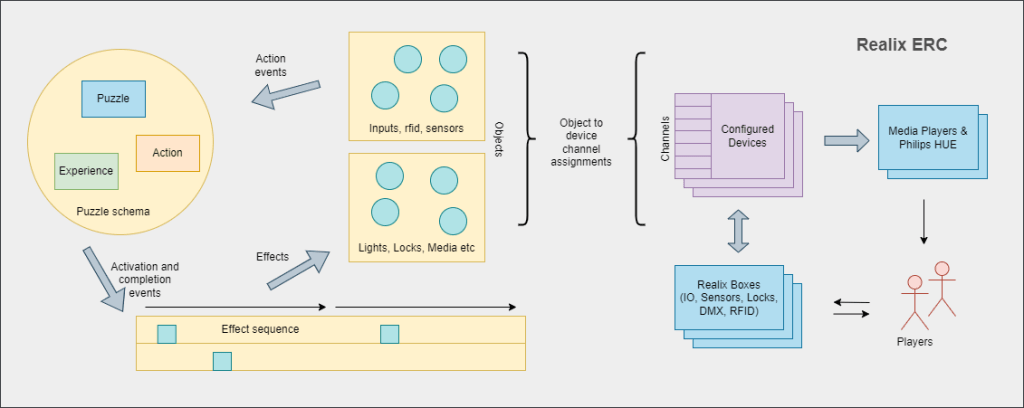The Realix ERC concept is built around a logical puzzle schema, effect sequences, objects, and hardware to communicate with the elements in the escape room.

In the image above, the left side illustrates the logic elements and their relationships. These elements determine the events that occur during the game. On the right side, the hardware and systems are depicted, which receive input from the players and interact with them.
Logical Elements
To define a room, the process begins with defining Objects such as lights, sensors, inputs, and locks—everything you want to interact with on a logical level. The game is modeled by setting up a Puzzle Schema. In this schema, you define puzzles, actions, experiences, and their flow.
Effect Sequences, similar to a cue sequence in theater, define the activation of effects positioned on a timeline. These effects can include light changes, playing and displaying media, releasing locks, etc. Effect sequences can be triggered during puzzles, upon completion of puzzles and actions, or when activating an experience.
Actions are similar to puzzles, but while a puzzle may involve more complex interactions with the player, an action is completed with a single event, like opening a door. Experiences define periods where the player simply experiences something, such as watching a video or waiting for objects or walls to move. During these times, the player only needs to wait and observe.
Physical Elements
Defining the physical side begins with specifying Devices and Channels. A device could be one of the Realix Boxes and Pods, a Media Player, Philips Hue, or a custom-made external service. Despite their differences, each device has a set of channels, which represent inputs/outputs, audio or video players, or lights. Essentially, each component or element to connect to is identified by a channel. In the Designer, logical objects are assigned to a channel to map the object to the physical component.
